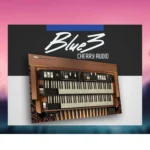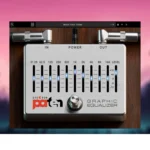
- Developer: Cherry Audio
- Developer’s website: cherryaudio.com/products/wurlybird140b
- Format: SAL, VSTi, VST3i, AAX, 64bit
- Tablet: Cured [R2R]
- Size: 254.3 MB
Cherry Audio introduces the Wurlybird 140B, the first virtual acoustic-electric instrument inspired by the legendary 1964 Wurlitzer 140B. Many call it the crown jewel of the Wurlitzer line. Although the 200 series models are better known and often copied, fans of the Wurlybird 140B appreciate it for its superb tone and sound quality.
The Wurlybird 140B was created by Cherry Audio based on deep expert sampling of a professionally restored 140B, featuring subtle randomization of key and pedal sounds, accurate modeling of the original preamp, accurate vibrato/tremolo emulation, and even adjustable ambient rumble. Additionally, the Wurlybird 140B includes a wide range of stompbox-style effects that enhance the tone, from subtle to extreme.
The Wurlitzer electric piano is undoubtedly one of the most classic rock and pop keyboards ever made. Its distinctive, rich bark and organic tone have been featured in countless hits over the years, including Ray Charles’ “What I’d Say,” Queen’s “You’re My Best Friend,” Three Dog Night’s “Joy To The World,” nearly every Supertramp hit, and a long list of rock and pop classics. The resonance of that sound continues today, with modern artists like Beck and Billie Eilish ensuring its enduring appeal.
Over the years, the Wurly (or “Wurly”) has been released in several variations. The most well-known are the 200 and 200A models, released in 1968. These models are lighter and more durable than their predecessors, thanks to their molded plastic bodies, making them more practical for gigging musicians. Although the 200 series models are the most common, Wurly aficionados consider the early 140B model to be the best in the line, with superior action and tone quality. The 140B was a complete redesign of the Wurlitzer keyboard mechanics, a redesigned case, and the introduction of the first solid-state amplifier.


